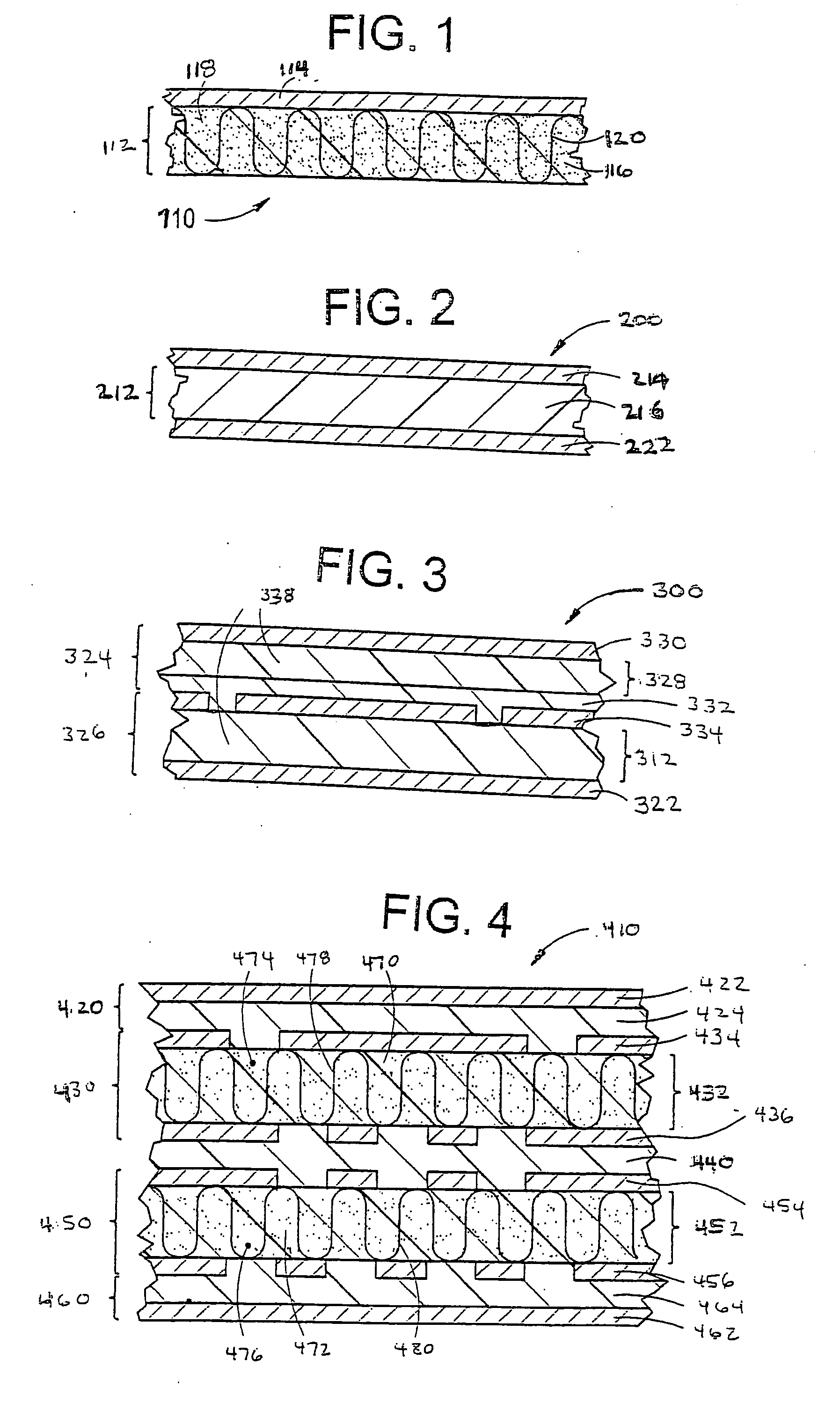Circuits, multi-layer circuits, and methods of manufacture thereof
a multi-layer circuit and circuit technology, applied in the direction of printed circuit aspects, basic electric elements, solid-state devices, etc., can solve the problems of poor mechanical integrity at high temperatures and reduce the strength of copper bonds, and achieve the effect of improving fabrication characteristics
- Summary
- Abstract
- Description
- Claims
- Application Information
AI Technical Summary
Benefits of technology
Problems solved by technology
Method used
Image
Examples
example 2
[0061] Liquid crystalline polymer resin such as Vectra A, available from Ticona, functionalized POSS (preferably an acrylate ester-functionalized POSS, and particulate filler (10-micrometer fused silica, available from MINCO or CE Minerals), are thoroughly mixed, for example in a high-shear, high-intensive mixer such as a Haake mixer, to form an intimate blend in conventional mixing equipment, preferably in melt. Mixing continues until the POSS and particulate filler are uniformly dispersed throughout the liquid crystalline polymer, and at a temperature effective to result in reaction (e.g., transesterification) between the functionalized POSS and the liquid crystalline polymer. The composite is formed into a layer by known processes. The liquid crystalline polymer composite is placed against the Cu foil (1 / 2-ounce copper such as NT-TOR from Circuit Foil). The laminate is processed by applying heat up to 500-600.degree. F. at a rate of, e.g., 5.degree. F. / min while under pressure, f...
example 3
[0062] POSS may be incorporated into the liquid crystalline polymer by copolymerization. For example, p-acetoxybenzoic acid, 6-acetoxy-2-naphthoic acid, and a copolymerizable POSS (e.g., one having a hydroxyl and a carboxylic acid functionality) are charged to a three-necked round bottomed flask equipped with a stirrer, argon inlet tube, and a heating tape-wrapped distillation head connected to a condenser. The charged flask is vacuum purged with argon three times and brought to reaction temperature, e.g., 250.degree. C., and stirred under a slow stream of argon while acetic acid is distilled from the polymerization vessel. The temperature of the reaction is adjusted to complete the reaction, e.g., to 320.degree. C., and may then be subjected to a series of reduced pressure stages, where the viscosity of the polymer increases. Upon cooling, the polymer plug is finely ground and dried, e.g., in a forced air oven at 150.degree. C. for about an hour. The resin may then be used in the f...
PUM
| Property | Measurement | Unit |
|---|---|---|
| temperatures | aaaaa | aaaaa |
| dissipation factor | aaaaa | aaaaa |
| dielectric constant | aaaaa | aaaaa |
Abstract
Description
Claims
Application Information
 Login to View More
Login to View More - R&D
- Intellectual Property
- Life Sciences
- Materials
- Tech Scout
- Unparalleled Data Quality
- Higher Quality Content
- 60% Fewer Hallucinations
Browse by: Latest US Patents, China's latest patents, Technical Efficacy Thesaurus, Application Domain, Technology Topic, Popular Technical Reports.
© 2025 PatSnap. All rights reserved.Legal|Privacy policy|Modern Slavery Act Transparency Statement|Sitemap|About US| Contact US: help@patsnap.com



